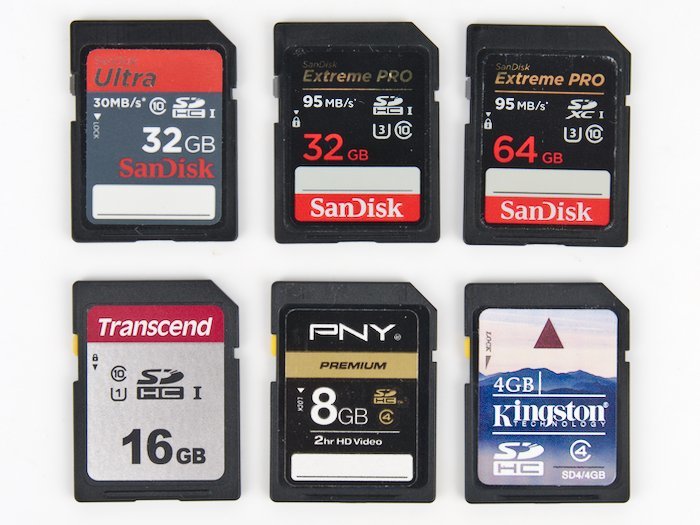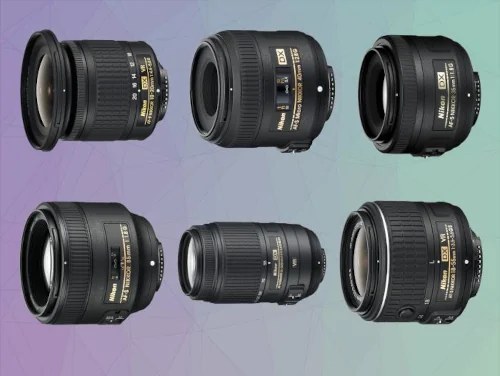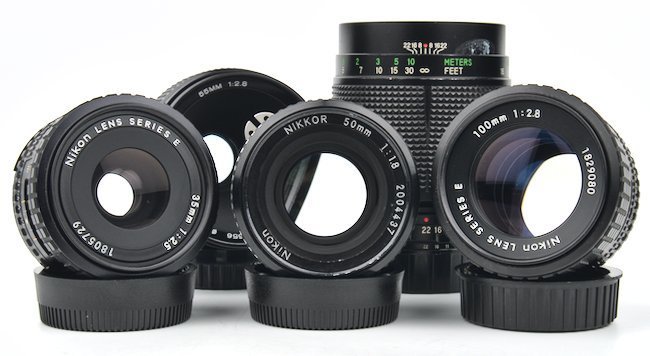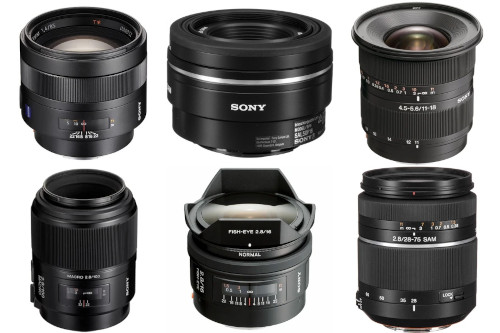
The 6 Best Lenses for the Sony A560
- Nathaniel Stephan
- Sony a560
- April 10, 2020
Table of Contents
The Sony A560 is a superb DSLR camera. If you do not currently own a lens or are looking for another lens, this will cover the top 6 lenses to have for your Sony DSLR-A560.
Affiliate Advertising Disclosure
Outside the Shot is a participant in the Amazon Services LLC Associates Program, an affiliate advertising program designed to provide a means for sites to earn advertising fees by advertising and linking to Amazon.com.
As an eBay Partner, I may be compensated if you make a purchase. I also participate in affiliate advertising programs with KEH and Adorama. More can be found on the Affiliate Disclosure page.
Standard Primes
Sony 50mm f/1.8 SAM DT
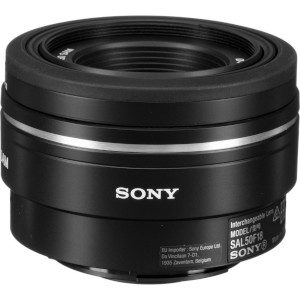
- Outstanding optics.
- Small and light weight.
- Can be difficult to find new.
- Smooth Autofocus Motor (SAM)
- Circular aperture.
See current price and more information on:
An impressive blend of light weight and very small size. Accurate and quiet autofocus is provided by a built-in autofocus motor..
A circular aperture allows you to close down by 2-stops and still have close to a circular aperture. The result is attractive bokeh and greater flexibility in controlling the depth of field.
Minolta Maxxum AF 50mm f/1.7
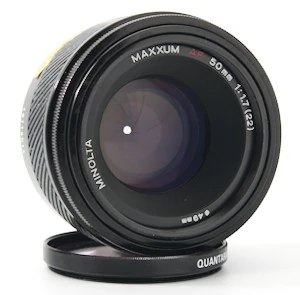
- Built-in lens hood.
- Amazing value.
- Light and compact.
- Widely available used.
- Coupled autofocus.
See current price and more information on:
This design was released by Minolta together with the launch of the A-mount. As a consequence of the age of the lens, the autofocus is done by the built-in motor in the A560.
Autofocus that is physically coupled can be a bit noisy and slow. In the event that that is not a concern for you the results are amazing. {The bokeh is pleasing and you’ll end up getting a classic image rendering|You will end up getting eye-catching bokeh and a classic look to your images.
A further significant advantage of this lens is the price. It is considerably less expensive when compared with the Sony 50mm f/1.8 and on top of that may be the least expensive lens on the list.
Sony 50mm f/1.4
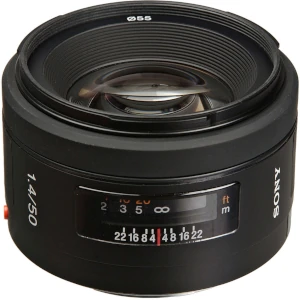
- Outstanding optics.
- Optical multi-coatings.
- Circular aperture.
- 55mm filter threads.
See current price and more information on:
A little bit faster when compared to the Sony or Minolta f/1.8, however that can definitely make an impact when you’re taking pictures in low light. That obviously comes at a larger cost.
It is still a small and lightweight lens that handles comfortably on the A560 and will fit into virtually any camera bag.
A possibly more inexpensive alternative is the Minolta AF 50mm f/1.4. Take into account that copies can be very hard to get in usable condition. The lens also was constructed with physically coupled autofocus, which is louder and slower than lenses that were designed with built-in autofocus motors}.
Portrait & Telephoto Lens
Sony 85mm f/1.4 ZA
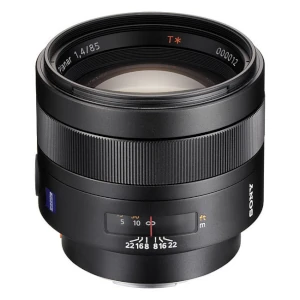
- Incredible bokeh.
- Excellent value used.
- T* coating to reduce flare and increase contrast.
- Astonishingly sharp wide open.
See current price and more information on:
Sony wanted to flaunt what the A-mount is able to do with this lens. Zeiss built the lens. The ZA (Zeiss Alpha) shows that Zeiss designed the lens exclusively for the Sony A-mount.
This is an excellent lens. Razor sharp corner-to-corner with brilliant colors that renders amazing portrait photos.
A potential downside is that it is a bit heavy due to being built like a tank and it can seem slow to autofocus. Be aware, that you’ll come across those same problems with any f/1.4 85mm lens.
Minolta Maxxum AF 85mm f/1.4
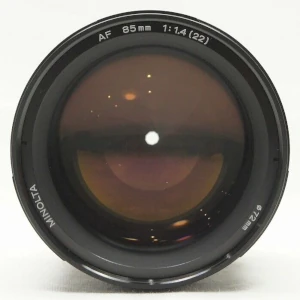
- Possible to find a good used deal.
- Superb image quality.
- Uses autofocus coupler.
- Double-Gauss design.
See current price and more information on:
In terms of cost, this lens fits between the other two. Locating a used lens in better than acceptable condition could be hard as a result of a small available supply.
While the lens has autofocus, it’s driven by the in-camera body motor that employs a physical coupler. This means the lens will be slow to autofocus and fairly noisy.
A Double-Gauss design is older and only uses a total of six elements. That is not a bad thing as the lens provides a distinctive appearance that is not able to be produced using a modern day lens.
Sony A560 Zoom Lenses
Sony 28-75mm f/2.8
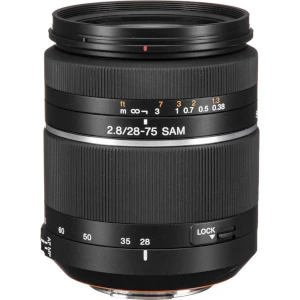
- Very usable zoom range.
- Great value used.
- Constant aperture.
- Smooth Autofocus Motor (SAM).
See current price and more information on:
If you want to shoot night events, indoor shooting, travel, and family photos, this is an ideal fast zoom for that. It is a well designed lens with fairly quiet autofocus.
The lens is often compared to the excellent Zeiss 24-70mm, but it is approximately half the weight and has a lower price. Both lenses produce pro photos.
Sony 55-200mm f/4-5.6 SAM DT
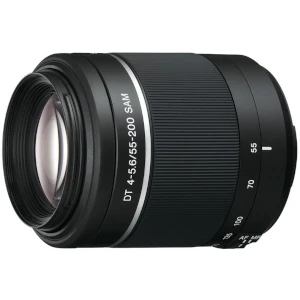
- Telephoto zoom range.
- Great for portrait or wildlife photography.
- Smooth Autofocus Motor (SAM).
- Inexpensive.
See current price and more information on:
While still delivering wonderful results, this lens is a lower priced selection. It is not a professional lens, therefore as long as you do not need all the bells and whistles, it is a great lens.
For a mid-range telephoto zoom, it offers an excellent zoom range for capturing pictures of sports, children outdoors, and wildlife.
The autofocus is snappy and it creates sharp photos. It is constructed out of plastic, which helps with minimizing weight.
Sony 75-300mm f/4.5-5.6
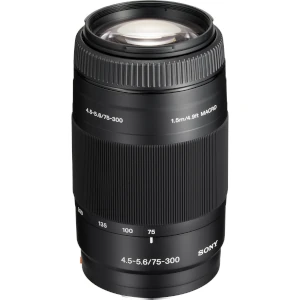
- Super telephoto zoom lens.
- Great for portrait or wildlife photography.
- 2.81 inches in diameter and 4.81 inches long.
- 55mm filter threads.
See current price and more information on:
This is a super-telephoto lens due to the large zoom range. It’s a very good inexpensive choice for any time you need a long lens.
It’s only 4.8 inches (12.2 cm) long, 2.8 inches (7.1 cm) in diameter, and is 1 pound 2 ounces (510g). While that is not by any means light, many professional telephoto primes and zooms are multiple times heavier than that.
For a little better results take a look at the Sony 70-300mm f/4.5-5.6 SSM ED G-Series, but expect to pay about twice the price.
Wide Angle Lens
Sony DT 11-18mm f/4.5-5.6
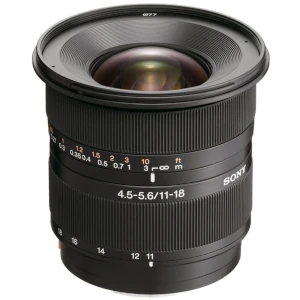
- Has a aspherical lens elements.
- Optical multi-coatings.
- Great value when purchased used.
- Circular aperture.
See current price and more information on:
Incredible value for the price if you want to capture great wide angle pictures that a standard kit zoom cannot capture. Distortion, especially of straight vertical lines is low or non-existent unless you are trying to create an distorted perspective.
As well as being good at shooting stunning landscapes, it’s an outstanding lens to travel with. The lens is wide enough so that when you come across something you’ll be able to get everything you see into the Sony A560’s frame.
Sony 20mm f/2.8
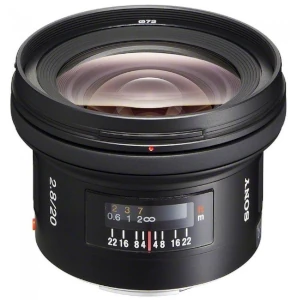
- Great for landscapes and architecture.
- Coated optics for clarity and definition.
- Rear focusing system for fast autofocus response.
- 72mm filter threads.
See current price and more information on:
It’s well-corrected and does an amazing job of reducing distortion. On top of that, a great deal of work has been put into decreasing flane and internal reflections.
The result is an outstanding lens that is ideal for architecture, landscape, and astrophotography. The rear focusing system means the front element will not rotate so you won’t have any difficulties using a polarizer or another filter.
Tokina AT-X 11-16mm f/2.8 DX II
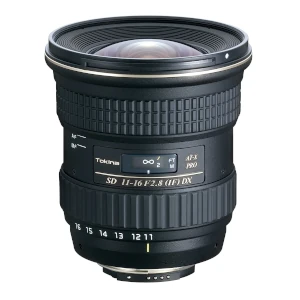
- Wide angle zoom lens.
- Hardened Alumite finish.
- Advanced optical coatings.
- All metallic moving parts.
- Designed for APS-C Sensors.
See current price and more information on:
It does not have extremely fast autofocus, but the manual/auto focus clutch makes it a very good option for manual focusing. A push or pull of the focus ring switches the lens from auto to manual focus or vice versa.
The Tokina is faster when compared to the Sony 11-18mm, which is definitely not a major deal for landscape or architecture photos. Where you will observe an improvement is with astrophotography. That is a situation where you are going to want to have the 1-to-2 stop advantage the Tokina supplies.
Fisheye
Sony 16mm f/2.8 Fisheye
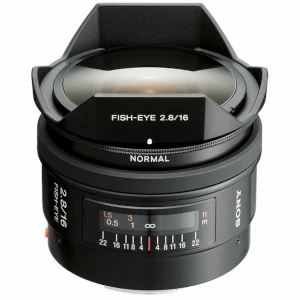
- Sharp corner-to-corner.
- 4 built-in filters: Normal, 056, B12, A12.
- 8 inch minimum focus distance.
- Aspherical and Extra-low Dispersion elements.
See current price and more information on:
Having built-in filters is a really good addition due to the fact the lens has a petal-style hood which prevents a lens filter from being mounted to the front of the lens.
- 056 - Accented contrast for black and white photos.
- B12 - Correct color by eliminating red tones.
- A12 - Correct color by eliminating blue tones.
This lens has just about everything you could require from a fisheye. You can get the exaggerated distortion, but the image will be sharp from corner-to-corner without vignetting.
Rokinon 8mm f/3.5 Fisheye
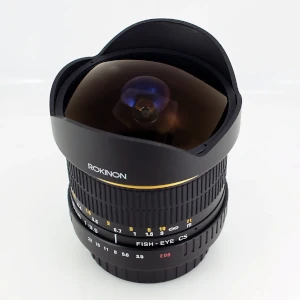
- Internal focus.
- 180 degree angle of view.
- Manual focus.
- Minimum focusing distance of 12 inches (0.3m).
- Designed for APS-C sensors.
See current price and more information on:
The lens has a bulbous front element that means lens filters can not be used. It has a snap-on petal-type hood that you will want to make sure that it is included if you order a used copy.
Build quality is often some what hit or miss as a result of the very affordable price of the lens. Most buyers are quite pleased with the photos they get. You will still want to extensively check the lens when you get it to know for sure that it isn’t a defective copy.
Macro Lens
Sony 100mm f/2.8 Macro
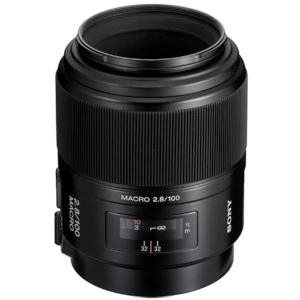
- 9 aperture blades.
- Focus range limiter.
- High contrast and resolution.
- 55mm filter threads.
See current price and more information on:
A great balance of weight, cost, and working distance for the Sony A560. The autofocus will be rather loud, but for taking macro images, manual focus is easier than using autofocus.
For the highest quality output at 1:1 magnification the lens really needs to be stopped down by two or more stops. Doing that will additionally give you a wider depth of field, which is crucial for macro.
Sony 50mm f/2.8 Macro
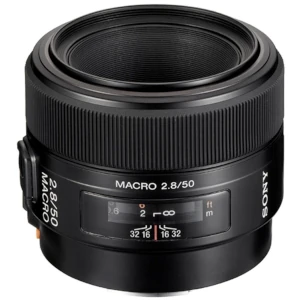
- 10.4 ounces (295g).
- Focus range limiter.
- Focus Hold button for full creative control.
- 55mm filter threads.
See current price and more information on:
The 50mm focal length is not that great for 1x magnification because of the minimal working distance. At 1:1 magnification, the front lens element will have to be around 2 inches (5 cm) away from the subject.
This lens excels at tabletop, copy work, and close-up photography. It helps you to get closer to a subject than a standard 50mm, and that is good for nature photography whenever you want to fill the camera frame with a small subject, for example a flower.
Tamron AF 90mm f/2.8 Di SP A/M 1:1 Macro
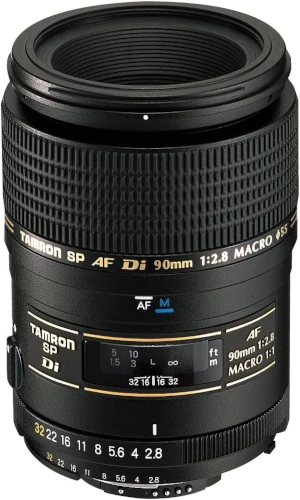
- Available in a variety of camera mounts.
- Improved resolution, chromatic correction, and optical coatings.
- Super Performance (SP)
- Focus clutch to switch between AF & MF.
See current price and more information on:
Even though this lens does have autofocus, the focus ring feels great when manually focusing. Closed down 2 or more stops and you’ll get sharp pictures.
Furthermore, be mindful when buying it as it’s offered for various camera mounts.
Used A-Mount Camera Lens Prices
Prices change all of the time. Over the past couple of years, participation in film photography has been rising. Seeing as there are 35mm Minolta cameras that use the A-mount, some additional demand is added to the cost of lenses.
The A-mount also does not hold a huge share of the market. Consequently, fewer third party choices are available and the lenses made by Sony are oftentimes on backorder.
To get the least expensive price on what you want, look at prices on multiple sites. For pre-owned lenses, be prepared to pay for when you see a deal as they don’t be available for very long.
What Lens Mount Does the A560 Use?
The Sony A560 uses the Sony A-mount. It’s also the same as the Minolta A-mount. This is due to Sony purchasing Konica Minolta’s camera division in 2006.
Minolta engineered the A-mount for the intro of interchangeable lens autofocus cameras in 1985. It’s still being supported by Sony to this day.
Standard Lens Cap Size
55mm filter threads are the most common, but in reality the filter sizes are all over the place. Older Minolta lenses mostly feature 49mm filter threads.
You will also find many lenses that have filter threads bigger than 55mm. It isn’t rare to see 77mm ro 72mm. It would have been helpful if Sony made use of only 2 or 3 different filter sizes.
